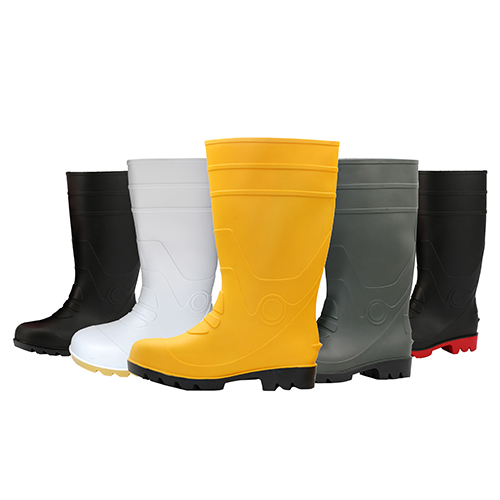The basic characteristics of safety shoes are mainly reflected in their design, material and function, the following is a detailed summary of these characteristics:

First, design features
Protection structure: Safety shoes are usually designed with steel head, anti-puncture midsole and other structures to protect the wearer's toes and soles from heavy objects, sharp objects and other injuries. The steel tip can withstand the impact of a certain weight, and the anti-puncture midsole can effectively prevent sharp objects from penetrating the sole.
Breathable design: In order to improve wearing comfort, safety shoes are designed with breathable factors in mind. For example, mesh materials, perforated design, etc., are used to increase the breathability of shoes and keep feet dry.
Anti-slip and wear resistance: The soles of safety shoes are usually made of wear-resistant and non-slip materials to provide good grip and wear resistance. This helps prevent slipping on slippery or uneven surfaces and keeps the wearer safe.
Second, material characteristics
Upper material: The upper material of safety shoes is various, including natural leather (such as cow leather), artificial leather (such as PU, PVC) and synthetic materials. These materials have different breathability, wear resistance and durability to meet the needs of different working environments.
Sole material: The sole is made of rubber, TPU and other wear-resistant, non-slip materials. These materials not only have good wear resistance, but also provide excellent anti-slip properties, ensuring that the wearer can steadily move forward on a variety of surfaces.
Special materials: For some special working environments (such as high temperature, high humidity, places with chemical substances), safety shoes may also be made of special materials such as high temperature, acid and alkali resistance, and oil resistance to protect the wearer's feet from damage.
Third, functional characteristics
Anti-smash: The steel ladle and other structures protect the wearer's toes from heavy objects.
Anti-puncture: anti-puncture midsole design is adopted to prevent sharp objects from penetrating the sole and stabbing the sole of the foot.
Non-slip: The sole is made of a wear-resistant, non-slip material that provides a good grip to prevent slipping.
Anti-static: For the need for anti-static work environment (such as electronics factory, pharmaceutical factory, etc.), safety shoes also have anti-static function to protect equipment and products from static interference.
Oil resistance, acid and alkali resistance: For specific working environments (such as chemical plants, oil mining, etc.), safety shoes also have oil resistance, acid and alkali resistance and other characteristics to prevent chemical substances from causing damage to the feet.
Comfort: Safety shoes are also designed with comfort in mind. For example, soft insoles and breathable materials are used to reduce the burden on the feet and improve the wearing experience.
To sum up, the basic characteristics of safety shoes are reflected in their design, material and function. These features work together to provide the wearer with comprehensive foot protection and safety at work. When choosing safety shoes, the appropriate style and specifications should be selected according to the specific working environment and needs.
Our factory was established in 2003 and we specialize in personal protective equipment, including PVC rain boots, rubber rain boots, EVA rain boots, safety shoes, helmets and other P P E products.
Contact: Lily
Phone: +8618622580676
E-mail: lily@dxyglobal.com
Whatsapp:8618622580676
Add: TIANJIN CHINA